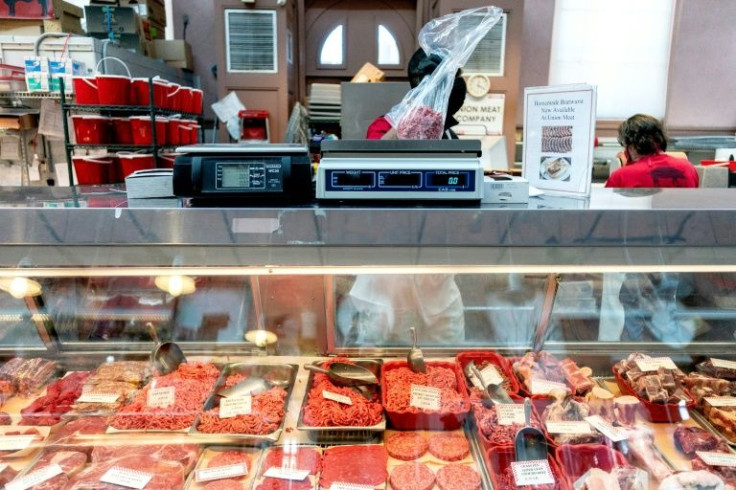Surging Beef Prices Hard To Stomach For US Shoppers
Her shopping cart is overflowing with food, but there is no trace of steak.
"Too expensive," said Lisa, a 48-year-old mother, as she left a Giant supermarket in Washington.
In the United States, land of barbecues and steakhouses, beef is becoming a luxury.
Overall consumer prices rose by seven percent over the course of 2021, an inflation rate not seen since 1982, and the data for January, due out Thursday, is expected to show the yearly increase continued.
American shoppers saw prices for meats, poultry, fish and eggs jump 12.5 percent last year, while beef has soared by as much as 23 percent, depending on the cut.
On the shelves of the Giant grocery store in the Van Ness neighborhood of Washington, only ground beef remains affordable for Lisa, mother of three teenagers, who declined to provide her last name.

"I buy mostly chicken and sausages. Sometimes ground beef," she said.
Prices for a quality cut of beef can cost up to $24.99 a pound (21.85 euros for 453 grams) while a butcher shop in the swanky Georgetown neighborhood charges $13 more for the same steak.
Jayson Lusk, head of the department of agricultural economics at Purdue University in Indiana cited "a variety of factors that are combining to push food prices higher."
Consumption has been boosted by high savings rates -- swelled by government aid -- for Americans largely stuck at home during the pandemic.
And "foreign buyers of US meat, particularly China, have exhibited strong demand alongside strong domestic consumer demand," Lusk said.
At the same time, wages in the meatpacking industry have increased by almost 20 percent since the start of the pandemic amid a nationwide worker shortage that also has impacted manufacturing and transportation, he said.
Tyson Foods, the largest meat processor in the United States, this week justified its price increases by saying it had to offset rising costs for labor to satisfy demand that continues to outstrip its capacity.

Over the last three months of 2021, Tyson raised beef prices by an average of nearly 33 percent compared to the same period of 2020, while the company's profits far exceeded expectations.
Now with savings dwindling and prices soaring, eating a steak is out of reach for many low-income families.
"If you're shopping for a family, I'm sure it has an impact," said Jay Smith, another Giant customer who said he only buys for himself.
"I already buy less meat and I wait to see if something comes on specials," Smith said. He added that he buys mostly chicken -- admitting a preference for fried chicken.
Spiking prices have undermined President Joe Biden's popularity, and the White House has mobilized to tamp down the increases, including rising beef prices, and rejected the idea that the pandemic is the sole culprit.
The White House calls the meatpacking and processing industry a "textbook case" where lack of competition hurts consumers. In the $213 billion industry, just four companies control 85 percent of beef processing and 54 percent of poultry.
The Biden administration last month launched an investigation into price fixing, along with a plan to try to alleviate the price hikes.
In the meantime, restaurants are adapting at the expense of their customers.
"Half of operators we surveyed in January have already reduced their menu size and raised menu prices in response to the challenges they are currently facing," said Sean Jafar of Dataessentials, which tracks some 5,000 menus representing a wide range of American restaurants.
And more plan to take similar steps.
Americans remain among the biggest consumers of beef in the world. They ate 59.1 pounds (26.81 kg) a person last year, up from 58.4 pounds in 2020.
Smith said the rising prices might be "a good opportunity to eat more healthy."
© Copyright AFP 2024. All rights reserved.





















